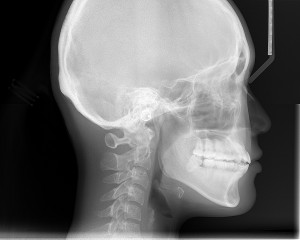Jarabak Cephalometric Analysis
Dr. J.R. Jarabak was and is still considered to be a living legend. In the dentistry world Jarabak is known widely for his cephalometric analysis of Brazilian Black patients. The cephalometry practice is one of the best systems available for the diagnosis of dentomaxillofacial alterations. The craniometric points found in the analysis are then used to measure the skeletal structure.
Throughout history many successful doctors in orthodontic treatments have produced studies to analyze facial growth patterns amongst different populations of the world. The purpose of Jarabak’s cephalometric study was to analyze and define more precisely where in the complex craniofacial dysplasia or disharmony exactly causes abnormalities.
Jarabak’s study, originally based off of the works of Bjork, focused on the specific population of men and women of Piracicaba descent from the Piracicaba region inside Sao Paulo, Brazil. One of the fundamental problems in orthodontic treatment is how orthodontists can predict growth. Specifically, Jarabak worked with segments of the dentofacial complex to assess the relationship of these segments and how they increase the normal growth of an individual.
Determining the characteristics of growth
Jarabak’s analysis takes into consideration not only the dentofacial growth but also the anteroposterior relationship, vertical relationship, and jaw relation within reference to the original structure i.e. the skull base. When measuring such a variety of growth it makes it easier to attribute and diagnose the main contributing factors.
There are four aspects that should be heavily considered when determining the characteristics of growth.
morphological characteristics
These characteristics consist of all of your cranial complex measures including the surface area, height, width, and structure.
prediction of facial growth pattern
Skeletal age and maturation patterns can help to predict peak times of facial growth. Once these patterns are known you can better assess and attribute discrepancies.
possible reactions to different orthodontic approaches
For instance nickel has been found to be a common sensitivity in many female patients. The nickel found in many orthodontic tools can cause many negative side effects in allergic patients.
detection of possible tendencies to functional alterations
The earlier you can detect signs of alterations the better when it comes to measuring growth. Many of the patient’s characteristics will be skewed depending on their possible tendencies of functional alterations.
Race distinction in craniofacial treatment
It’s important to take note of the distinction amongst different races in the cephalometric analyses. Jarabak’s cephalometric analysis is able to predict results of different orthodontic approaches as well. The analysis is made up of a series of lines and angles that define each individual’s unique skeletal characteristics, and thereby identify the muscular pattern.
Since each individual has their own unique set of skeletal characteristics it’s easily studied according to racial and ethnic group. Several different studies have investigated unique heritage and cultural pools to understand the standard normality mean values for each particular group. It’s important that each group by evaluated separately and in depth according to their own characteristics.
For instance black subjects have a very strong distinction from other races, particularly caucasians. In the past cephalometric analyses have been routinely used for diagnosis and planning for treatment for caucasian patients. Caucasian cephalometric standards vary completely, this is why it’s important to determine Jarabak’s standards for cephalometric analysis for a wide variety of different ethnicities.
Normal Occlusion Growth
Growth as we discovered earlier is a determinant of many different factors. Growth is controlled by genetic, environmental, and many other contributing factors. Those with normal occlusion we typically see that patient’s jaws and other facial structures develop at the same rate with successive growth alterations expressed mainly in the sagittal and transversal directions. This is resulted in an adult matured face with normal proportions and adequate occlusal relationships.
Radiographic cephalometry has also been used to study facial form in normal occlusions. It’s also being used to assess and guide orthodontic diagnosis and treatment planning related to craniofacial growth, and predicting growth. When you combine the results from the radiographic cephalometry with those from the Jarabak analysis you can see the associated morphological characteristics of the lower jaw and the other structures of the craniofacial complex.
When comparing different ethnic groups it’s revealed that there are indeed differences in skeletal and dental framework. This presents the need to evaluate cephalometric patterns and characteristics of the whole dentofacial complex for each unique group.
In a study by Cotton three different ethnic groups were compared to the black analyses. It became prevalent in the study that when compared to caucasians, black individuals had a higher protrusion of maxilla, a convex profile, a steep mandibular plane and flared maxillary and mandibular incisors.
Bialveolar protrusion also known as bimaxillary protrusion is another common occurrence in some ethnic groups because of the forward positioning of their teeth and its effect on the facial profile. Since we have access to multiple different studies that show the ‘normal occlusion growth’ and measurements for various different ethnic and racial groups, we know that normal for one group is not necessarily normal for another.
It has also been found that while there are statistically significant results for different results among ethnicities, there has yet to be found statistically significant results among gender for any of the given ethnicities.
Jarabak gave us a lot of useful insights into the practices of cephalometric analyses. Without his great works we wouldn’t be nearly as developed and prospering as we are today. His studies and the tools he left us with will impact orthodontistry and cephalometric analyses in particular for a long time to come.






